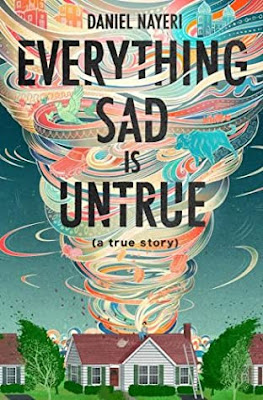We started with our nonfiction 'novel': Vincent and Theo: The Van Gogh Brothers by Deborah Heiligman. Only one of us loved it; everyone else had parts they liked a lot, but thought the book was too long for what it was trying to accomplish -- a couple of readers said they couldn't finish it. Everyone liked the black-and-white reproductions of Vincent's drawings that introduced each chapter, and appreciated the fact that each one included the years covered. We all appreciated learning more about Vincent's early life and his very close -- maybe co-dependent -- relationship with his brother Theo. We appreciated the enormous amount of research the author had done, and the inclusion of direct quotes of the many letters between the brothers over the course of their short lives. We were gratified to learn about Jo, Theo's wife, who -- along with her son -- was instrumental in creating the Van Gogh Museum in Amsterdam. Although one reader felt the very simply-written text lacked passion, most of us weren't bothered by that; but even with the spare text several readers felt that it was a book for adults rather than young readers -- though a couple of us felt it could be enjoyed by high school readers who were interested in art. We all loved the fact that it spoke to Vincent's persistence in finding his way to express his deepest feelings through his art, though we wondered how much he would have done without his brother's emotional and financial help throughout his life. We all appreciated all of the end matter: the list of people involved in Vincent's life, the Timeline, the Author's note and the Endnotes. We felt it was an excellent resource, even as the writing perhaps lacked intensity or feeling.
We mostly liked our nonfiction picture book, The Girl Who Named Pluto: the Story of Venetia Burney by Alice B. McGinty; illus. by Elizabeth Haidle. We all loved the way the illustrations were fully integrated with the story of 12-year-old Venetia, a fan of astronomy and mythology, who -- on a sudden whim -- combined these two interests to come up with the name Pluto for the newly discovered planet in 1930, becoming the only child to have ever named a planet. We appreciated learning this bit of trivia, and a bit about Venetia's life -- especially her relationship with her grandfather who had the proper connections with the 'powers that be' to get her suggested name accepted by the Royal Astronomical Society. We were gratified to learn that Venetia actually got to see Pluto through a telescope when she visited the Observatory Science Center the day before her 89th birthday. One reader felt that the story was 'slight' -- pleaseant enough to read, but not showing any great initiative or struggle on Venetia's part; without her uncle's intervention, Pluto would never have gotten its name. We appreciated the author's note explaining how she created the story from known facts, and the Selected Bibliography for those interested in gaining more information. We thought the book was accessible for young readers and could also be useful for science teachers as an introduction to studying astronomy.
Two pieces of nonfiction added to our knowledge about the world.

















